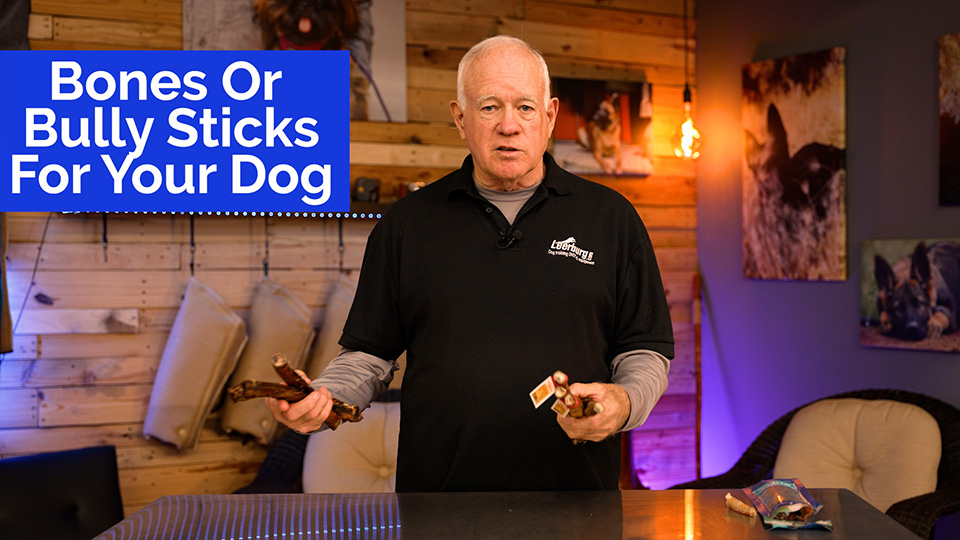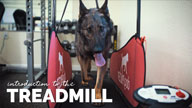Related Videos
Loading
How You Can Help Save Your Dog's Life
Uploaded on January 2, 2018 •
32 min
Table of Contents
IN ALL CASES OF CRISIS, maintain a calm and reassuring attitude, and get to a veterinarian if necessary.
Approaching an Injured Dog
- Walk up slowly and carefully
- Let the dog smell your hand
Methods of Restraint
- Capture with blanket
- Muzzle
Breathing and Pulse Rate
- Normal breathing: 12-30 times per minute
- Normal pulse: 70-160 beats per minute
- Check pulse on inside of upper hind let, half to three-quarters of the way up or directly feel the heart about 3-4 ribs back of left front leg
CPR
- Place dog on right side
- Pull tongue forward and clear mouth of blood/mucus
- Pull tongue forward again, close dog's mouth, and administer artificial respiration
- Give 2 fairly quick breaths, then pause 5-6 seconds and repeat sequence
- For heart measure, place towel or clothing on under side of rib cage
- Use both hands to compress about 3-4 ribs back of left front leg
- Compress 60-80 times per minute
- One person doing both artificial respiration and heart massage (CPR)
- Give 2-3 quick breaths and massage heart 15 times
- Two people doing CPR
- One person give 2 good breaths and the other 5 good heart compressions
- Keep dog covered for shock
- Avoid heart massage in case of chest injury
- Bandage chest area if air escaping from lungs
External Bleeding
- Bandage
- Use tourniquet if on leg and loosen every 3-5 minutes
- Apply thick cotton or towel pad with pressure if still bleeding
Fractures
- DO NOT attempt to set unless veterinarian not readily available
- Control serious bleeding
- If necessary, apply temporary splint using rolled newspaper or flatsticks
Internal Bleeding
- Do not attempt first aid
- Keep dog quiet and warm, and watch for paleness
Drowning
- Hold dog upside down for 10-15 seconds
- Remove foreign matter from mouth and throat, pulling the tongue out
- Begin CPR if necessary
Choking
- Carefully open mouth and remove foreign object if present with pliers or blunt instrument
- If fails, try a sharp blow on back of neck between the shoulders
- If fails, attempt Heimlich maneuver
- Stand or kneel behind dog, grasp his/her body at bottom of rib cage, apply quick and firm pressure, repeat 2-5 times
Heat Stroke
- Immerse in tub of cold water or hose down
- Apply ice packs to head
- Begin CPR if necessary
Burns
- Muzzle dog
- Flush chemical burns with cold water
- All other burns: apply ice water compresses or cold damp cloth. Do not use cotton
Moving an Injured Dog
- Carefully slide him/her onto a padded board, blanket, or makeshift stretcher
Poisoning
- Induce vomiting if not already vomiting
- Give 1 tsp hydrogen peroxide or 2-4 tsp ipecac or 1 tsp salt on the tongue
- DO NOT induce vomitting if dog is incoordinated and does not have a gag reflex
- DO NOT induce vomitting if poison is a petroleum product, acid, or alkali. In this case, give milk or water to dilute poison
- DO NOT induce vomitting if several hours have passed since ingestion of poison
- If staggering or convulsing, prevent injury with a blanket
- If poison is known, contact poison control center through your veterinarian
Antifreeze (Ethylene Glycol)
- Induce vomitting
Snail Bait (Metaldehyde)
- Symptoms are muscle tremors and convulsions
- Induce vomitting
- Protect with blanket to prevent injury
D-Con (Blood Anticoagulant)
- Causes death by bleeding internally
- Induce vomitting
Lead Poisoning
- No appetite and colic
- Induce vomitting
Strychnine Poisoning
- Violent spasms
- Induce vomitting if not convulsing
Poisonous Plants
Oleander
- Nausea and diarrhea
- Induce vomitting
Poinsetta
- skin irritation and gastritis
- Flush skin and give fluids if persistent vomitting
Castor Bean
- 1-4 seeds can be fatal
- Induce vomitting
Hydrangea
- Can produce cyanide poisoning and coma
- Induce vomitting
Daffodil and Tulip Bulbs
- Nausea and labored breathing
- Induce vomitting
Mushrooms
- Extreme abdominal pain
- Induce vomitting
Poisonous Snake Bite
- Keep dog quiet
- If leg wound, apply flat tourniquet above wound (not too tight). Be able to insert finger under tourniquet. May leave on up to 2 hours.
- Use ice packs to slow spread of venom
Tick Paralysis
- Paralysis of front and hind legs
- Remove ticks carefully and take to our veterinarian
Salmon Poisoning Disease
- Caused by eating raw salmon or trout
- High fever, not eating, depression
- take to your veterinarian
Eclampsia (Milk Fever)
- Occurs in female dogs in late pregnancy or after whelping
- Incoordination and convulsions
- Consult with your veterinarian if your dog is pregnant
Foxtails
- For foxtail in ear, place a few drops of mineral oil or olive oil in ear until can be removed
- For foxtail in nose, take to your veterinarian
- Trim hair on paws and ears for prevention
- Comb and check your dog after being in weeded areas












